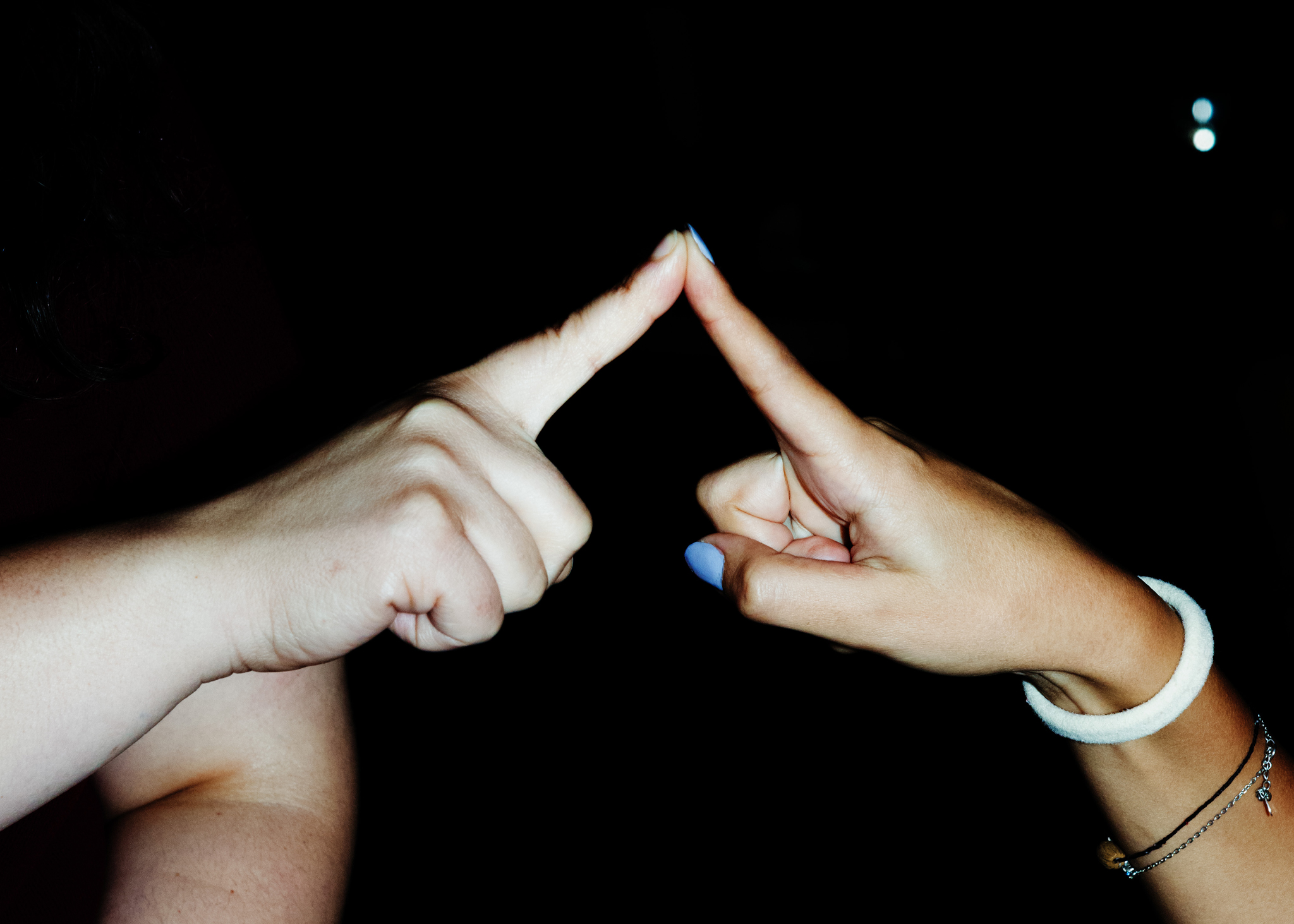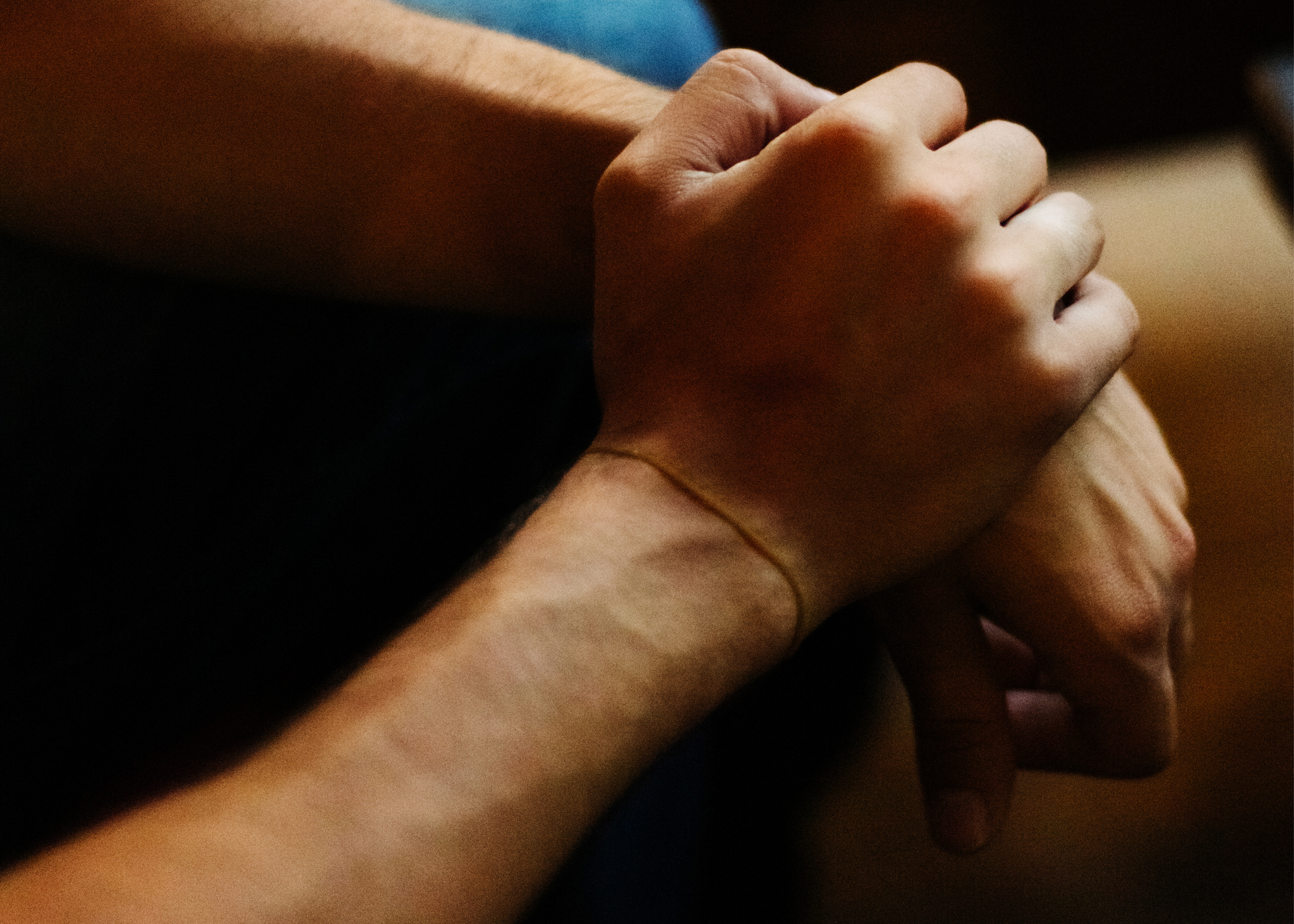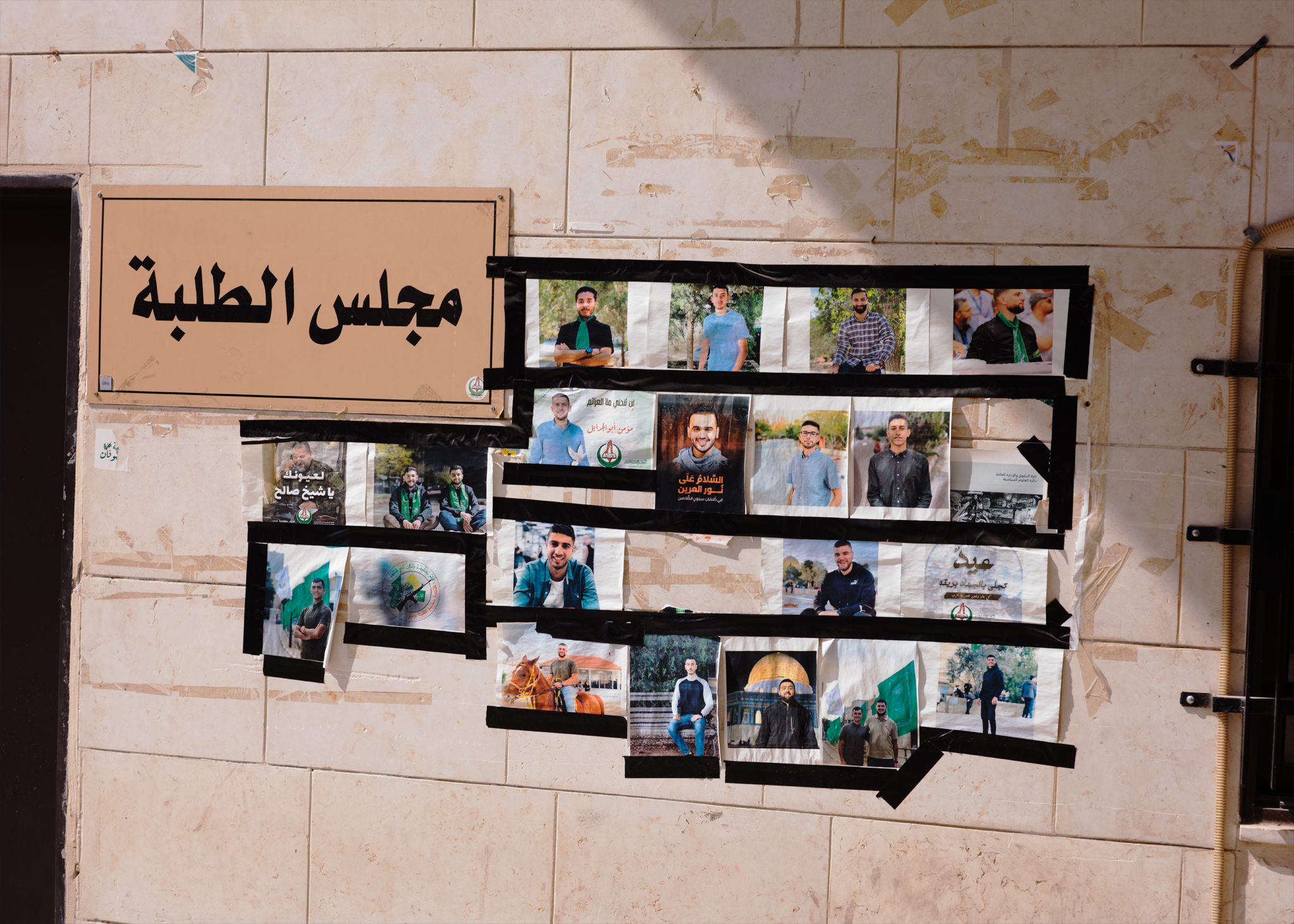RAMALLAH, PALESTINE — Layla was jolted awake by urgent voices just before dawn on September 17, 2024. Her mother and brother were whispering that enemies were at the door of their Ramallah home. In the living room, an Israeli occupation soldier checked each of the family members’ IDs. Then he informed the family that he and the other officers had come to arrest Layla*, who was then 21 and beginning her third year at Birzeit University.
Although the Zionist authorities had not issued Layla an arrest warrant, as they often do, arbitrarily, to harass and intimidate Palestinian students, she wasn’t surprised that they’d come for her. Several months earlier, they had murdered her friend Rami*. A month ago, they had arrested her brother, only to release him later. In the occupied West Bank, students are targeted for their associations as much as for their political activity.
“The captain told me, ‘You are here because inti mahbooba — you are loved,’” Layla recalls.
The head officer ordered her to get dressed. She went back into her room and grabbed her best pair of long socks and a hoodless jacket, since the prison guards, she knew, would confiscate anything with a hood. Back in the living room, Layla tried to comfort her weeping mother by listing the names of all the girls in her class who would be keeping her company in prison.
This strategy of consolation proved ill-advised. “She started cursing me and all my friends, asking what the hell we did,” Layla says, laughing.
Soon Layla was handcuffed, then marched to a military jeep. Over the next 48 hours, the occupation soldiers drove her to different processing centers, where they interrogated, beat, intimidated, and sexually harassed her. At one point during her interrogation, she was forced to balance on a beach ball for hours, the strain leaving her core and legs in agony.
When finally she was brought to Damon Prison in Haifa, Layla felt that she was walking into a giant cage and, at the same time, arriving at a school reunion. Classmates cheered her name when they caught glimpses of her through the glass window of the prison’s large sliding doors. Passing by them on the way to her cell, she pressed her pointer fingers to theirs through the iron bars — the only form of touch she would know for months to come.

Layla is one of hundreds of students across Palestine who have been locked up in the occupation’s prisons since October 7, 2023 — including 150 from Birzeit alone, the highest number of student detainees from any Palestinian university outside Gaza. Students at other West Bank universities, like Al-Quds and An-Najah, have also faced raids, arrests, and censorship.

The repression at Birzeit reflects a broader landscape, in which Israel’s regime forces Palestinians to bend, twist, and reconfigure themselves just to survive its suffocating grip.
Since its establishment in the 1970s, Birzeit has developed a reputation for influencing Palestinian political life. Over time, this has made it a target of both the Israeli occupation and the Palestinian Authority (PA). Still, the school’s administration has protected the student body’s right to engage in political activity over the decades, making Birzeit one of the rare Palestinian campuses where students from across the political spectrum openly organize.
“We call it the only liberated place here,” says Hadeel Shatara, a Birzeit faculty member and recent prisoner of the Zionist regime.
At Birzeit, the exigencies of life under occupation are woven into the curriculum. Professors routinely excuse the absences of students who are hiding from the occupation’s deadly witchhunts. Since Israeli forces carry out most of their arrests at the start of final exams season in an attempt to sabotage academic careers, the administration allows students to take their exams late or retake their classes free of charge.
Even death is folded into campus life. When a student is martyred — like Rami in 2024, or like the brothers Jawad and Thafer Rimawi in 2022 — they return to the school grounds one last time, their body borne on their classmates’ shoulders in a solemn procession before burial. It is a ritual no other Palestinian university carries.
“It is part of our identity, something we're really proud of,” Shatara says.
Historically, the university has admitted only the top-performing students from each village, filling the campus with bright young minds from Akka and from Gaza City, from upper-class Ramallah and from the refugee camps. Before the Second Intifada in the early 2000s, nearly a third of the student body came from Gaza.
Cafeteria debates and classroom arguments, attended by the likes of Palestinian People's Party Secretary-General Bassam Al-Salhi and political prisoner Marwan Barghouti, seeded the DNA of the student movement in the occupied lands and gave rise to the political parties and ideologies Palestinians inherit today.
“It is known that much of the organizing during the First and Second Intifadas came out of Birzeit,” Shatara said. “The student movement led the streets.”

Over time, the political party structure on campus consolidated into three major factions: Hamas-aligned Al Wafa’ Islamic Bloc, the Fatah-aligned Martyr Yasser Arafat Bloc, and the PFLP-aligned Democratic Progressive Student Pole. The campus’ student elections are not popularity contests, but instead serve as barometers of where the Palestinian body politic is headed. In the nearly two-decade absence of national elections, Birzeit’s polls have come to signify the pulse of majority opinion. Since 2015, the Islamic bloc has dominated these polls, which has discouraged the PA from holding national elections that could upend Fatah’s rule.
Since October 7, 2023, the Israeli regime has ramped up its attacks on students at Birzeit. Due to the campus popularity of the Islamic Bloc, occupation forces have begun to single out and punish groups and individuals they perceive as aligned with Hamas. The occupation, aiming to paralyze political activity on campus, treats engagement in student activism as grounds for an automatic arrest warrant. Since this genocidal war on Gaza began, no student elections have been held at Birzeit.
Elections, Shatara explains, are “a celebration of democracy.” Holding such a celebration now would not only be tone-deaf, but could also expose students to an increased risk of arrest. These days, much of the political organizing at Birzeit happens underground.
“They arrested the entire first and second lines of command in the Student Union,” Shatara said.
“So a third line started showing up.”

But even showing up on campus can be a challenge. Over the last two years, the occupation has established over 100 new checkpoints across the occupied West Bank, bringing their total count to approximately 900. The humiliation of the checkpoint is a universal Palestinian experience, but for Birzeit students the scrutiny is particularly high. According to Shatara, guards have beaten dozens of Birzeit students for doing nothing more than trying to get to their classes on time.
“The guards check every student’s ID and bag,” Shatara explains, “and if they see a Birzeit book inside, they’ll pull the student aside and make them step out of their vehicles.” Sometimes, the guards steal textbooks and notebooks.
In addition to the repeated intimidation and attacks by Zionist forces, students feel the weight of a secondary occupation: the Palestinian Authority. Whereas PA forces used to limit their repression of students to campus interrogations, they now stalk young people in their neighborhoods and homes.
According to Shatara, dozens of Birzeit students were arrested during “Operation Protect the Homeland,” a series of PA raids aimed at rooting out armed resistance in the cities of Jenin and Tulkarem. During that period, the university hired its own lawyers to fight for the students’ release in the PA’s courtrooms. Eventually, Birzeit succeeded.
“The PA uses the same method that the occupation uses — collective punishment,” Shatara says. “Both regimes are working together.”
Some Birzeit students had tasted Zionist prison before they’d ever stepped foot through the university’s gates. Shadi*, now 19, was arrested as a 16-year-old high school student. As with Layla’s case, occupation forces arrived at his family’s home in Jerusalem at 5 a.m. Ten military vehicles surrounded the house, carrying some 70 soldiers.
Once inside, occupation soldiers punched and kicked Shadi in front of his parents and brother. The soldiers pointed their snipers at Shadi’s relatives as they beat him, telling him that if he resisted, they would shoot. Before he even made it out of the house, he had a broken nose and several broken teeth.
“I was done. I wasn’t conscious,” Shadi recalls.
The Zionist forces held Shadi for “processing” for 16 days before bringing him, like Layla, to Damon Prison. That whole time, he was barefoot. The only clothes he had on him were the ones he’d worn to sleep on the night he was arrested: a pair of shorts and a t-shirt from a marathon he once ran in Bethlehem, which read “urkud ila al-hurriya, or “run for freedom,” on the back. “You’re running for freedom, yeah?” one soldier sneered as he punched Shadi repeatedly in the side.
What stung Shadi the most, he says, was how the soldiers mocked his faith. Curses of Jesus and Mary became the soundtrack to Shadi’s two months in prison. Like Layla, he believes he was arrested for no other reason than to terrorize his community in Jerusalem.
“They wanted me to be an example for others,” Shadi says. “When there’s a Palestinian guy who’s Christian and speaks English, it’s dangerous for them.”
Layla remembers the small cake her fellow detainees had welcomed her with, which they made from small portions of tahini, jam, and toast they’d quietly saved for the occasion. Her memories of raids, daily strip searches, and gnawing hunger are interwoven with moments of singing and dancing with her peers.
“After they’d drag us to the yard and torture us, you won’t believe it, we’d go back to cook and play games,” she recalls. “We’d laugh for the rest of the day.” Games were their way of restoring their agency and resistance.
These days, Layla’s interaction with Zionist forces is not confined to checkpoints. Ever since her release, she and the other freed student prisoners receive random phone calls from occupation intelligence agents. In the calls, the agents detail what they observed her doing that day:arriving and leaving campus, attending lectures, sitting with friends.
Although his imprisonment was years ago, Shadi’s case remains open and the threat of sentencing still hangs over him. He doesn’t allow himself to plan beyond his final court date, let alone imagine a long-term career. His judge is an Israeli settler living illegally on Palestinian land.
He asks rhetorically: “When the judge is your enemy, how are you supposed to be free?” .
For Shatara, the biggest obstacle for the student movement in Palestine is the weakness of the broader Palestinian political movement. Today, students have no real model in the political party structure to emulate, no coherent strategy to build upon.
“They have to count on themselves,” Shatara says. “But sometimes you need someone to point things out for you, someone with experience to learn from. All they’ve seen during the past 20 years is a failing experience.”
In the occupied West Bank, there is no safe space left to engage in political activity. Drones circle ceaselessly overhead, buildings are equipped with rotating cameras, and phone-tapping and spyware apps register practically all remote communication. Nonetheless, Shatara is adamant that the student movement, which has carried the past revolutions in Palestine, will rise again.
“No matter how hard the situation is getting, the younger generation will find a way out,” she insisted. “We need to rebuild trust in these students, to protect their work and give them space to act.”
When campus encampments erupted across the world in solidarity with Gaza, Shatara said university students in Palestine felt a rare sense of hope.
“Here, students feel that everything they try to do is pointless, because wherever they turn, they face attacks,” she said. “But when they saw something happening on campuses abroad, they thought: people know what’s going on. Students are moving.”
As students across the world march in their name, the occupation traps young Palestinians inside a silo. The occupation engineers this isolation with checkpoints, arrests, prisons, raids, and surveillance,in order to convince Palestinian youth that they are alone, that resistance is useless, and that no solidarity can pierce the occupation walls they are sentenced to endure.
“We're in the belly of the beast here, just like in the US,” Shatara says. “The students here know they are responsible for the future of Palestine. They know they can’t just wait for a hopeful picture of the future to come. They have to create it with their own hands.”
*Names marked with an asterisk are pseudonyms used to protect the identities of the sources interviewed.
This piece appears in the nineteenth issue of The New York War Crimes.


